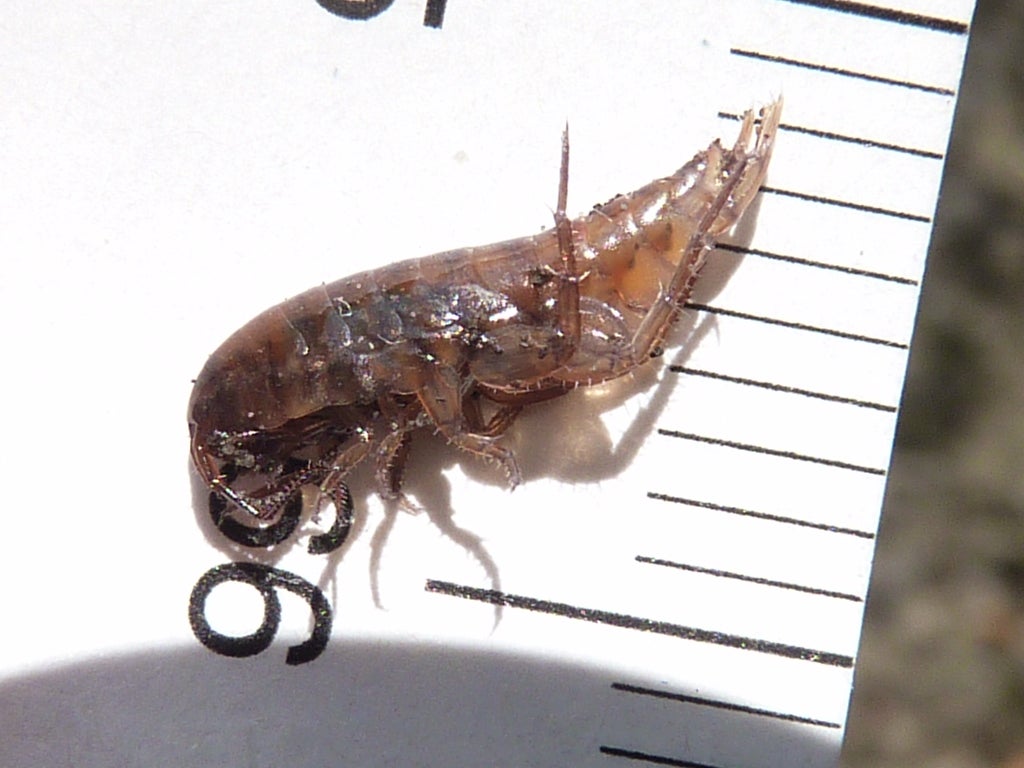East Australian homes invaded by strange new visitors amid deluge - lawn prawns
Small and dull brown in colour, the creatures are prawns found on land and pose no risk to homes

Your support helps us to tell the story
From reproductive rights to climate change to Big Tech, The Independent is on the ground when the story is developing. Whether it's investigating the financials of Elon Musk's pro-Trump PAC or producing our latest documentary, 'The A Word', which shines a light on the American women fighting for reproductive rights, we know how important it is to parse out the facts from the messaging.
At such a critical moment in US history, we need reporters on the ground. Your donation allows us to keep sending journalists to speak to both sides of the story.
The Independent is trusted by Americans across the entire political spectrum. And unlike many other quality news outlets, we choose not to lock Americans out of our reporting and analysis with paywalls. We believe quality journalism should be available to everyone, paid for by those who can afford it.
Your support makes all the difference.“Lawn prawns” have taken over several homes in Australia’s east coast after heavy rains in the area forced the creatures to look for dry areas to seek shelter.
Small and dull brown in colour, the creatures are prawns that are found on land.
The creatures, normally considered harmless, are usually found in moist soil beneath leaf litter in the area.
The creatures cannot, however, breathe under water but still need moisture to survive.
Researchers believe that with heavy rains in Queensland and New South Wales, these creatures have moved to people’s homes.
Shane Ahyong, a research scientist on marine invertebrates at the Australian Museum, said it was surprising people have found the creatures in their homes.
“It’s not very often people see them and that’s why it’s quite surprising for people to find them in their homes,” he was quoted as saying by The Guardian.
“Usually they’re hidden, unless you’re looking for them you won’t find them.”
The creatures usually die inside homes because of a lack of moisture.
They are also not popular as food compared to their sea counterparts.
“You can eat them if you want,” Mr Ahyong said. “But they won’t do much for you, they’re very small.”
“The key message is don’t see them as a threat, see them as a benefit. Please don’t use pesticides because that will kill them, having a lot of them in your leaf litter is the sign of a healthy system.”
Residents in the area have taken to social media and shared images of the creatures that they have found in their homes.
Queensland resident Anne Carlin, in a tweet, sought more information about the “miniature prawn”.
“There are hundreds of them on our tiles after a big storm last night,” she said.
Helen Bender, another Queensland resident, said she first noticed the tiny creatures dead at her home in December.
Ms Bender told ABC she had spent weeks trying to figure out what they were.
“The thing I think probably makes people freak out is that they jump, a bit like a shrimp,” Valerie Caron, an entomologist at the University of Canberra, told news.com.au.
“People might be worried that they’re a bit like a flea but they’re not, they can’t bite or do anything.”
While the creatures are not a risk at homes, researchers said climate change has resulted in shrinking their potential sites.
“Combine climate change with urbanisation and habitat loss, we are really reducing the number of potential sites that these animals can live in,” said Mr Ahyong.
“Because they’re hiding in the soil we can destroy swathes of their environment without even knowing it, and that’s bad news for the animals that rely on them for what they do in the soil and rely on them for food.”
Join our commenting forum
Join thought-provoking conversations, follow other Independent readers and see their replies
Comments